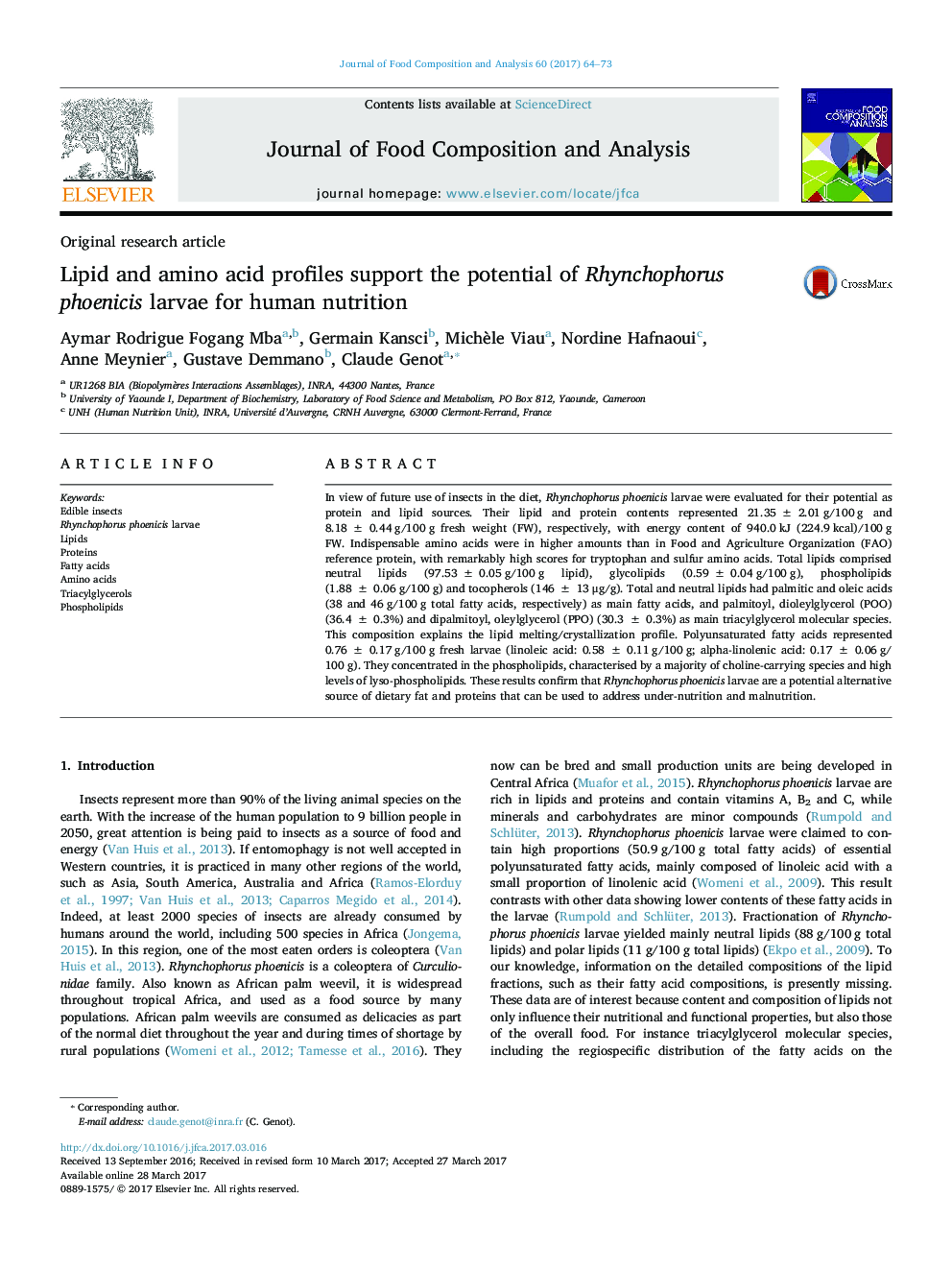| کد مقاله | کد نشریه | سال انتشار | مقاله انگلیسی | نسخه تمام متن |
|---|---|---|---|---|
| 5136899 | 1494482 | 2017 | 10 صفحه PDF | دانلود رایگان |

- Nutritional composition of larvae of Rhynchophorus phoenicis was investigated.
- The larvae are a valuable source of energy due to their high lipid content.
- The lipids are rich in unsaturated fatty acids.
- Their proteins contain all indispensable amino acids in high amounts.
- POO and PPO are the major triacylglycerols and explain the thermal properties of the lipids.
In view of future use of insects in the diet, Rhynchophorus phoenicis larvae were evaluated for their potential as protein and lipid sources. Their lipid and protein contents represented 21.35 ± 2.01 g/100 g and 8.18 ± 0.44 g/100 g fresh weight (FW), respectively, with energy content of 940.0 kJ (224.9 kcal)/100 g FW. Indispensable amino acids were in higher amounts than in Food and Agriculture Organization (FAO) reference protein, with remarkably high scores for tryptophan and sulfur amino acids. Total lipids comprised neutral lipids (97.53 ± 0.05 g/100 g lipid), glycolipids (0.59 ± 0.04 g/100 g), phospholipids (1.88 ± 0.06 g/100 g) and tocopherols (146 ± 13 μg/g). Total and neutral lipids had palmitic and oleic acids (38 and 46 g/100 g total fatty acids, respectively) as main fatty acids, and palmitoyl, dioleylglycerol (POO) (36.4 ± 0.3%) and dipalmitoyl, oleylglycerol (PPO) (30.3 ± 0.3%) as main triacylglycerol molecular species. This composition explains the lipid melting/crystallization profile. Polyunsaturated fatty acids represented 0.76 ± 0.17 g/100 g fresh larvae (linoleic acid: 0.58 ± 0.11 g/100 g; alpha-linolenic acid: 0.17 ± 0.06 g/100 g). They concentrated in the phospholipids, characterised by a majority of choline-carrying species and high levels of lyso-phospholipids. These results confirm that Rhynchophorus phoenicis larvae are a potential alternative source of dietary fat and proteins that can be used to address under-nutrition and malnutrition.
Journal: Journal of Food Composition and Analysis - Volume 60, July 2017, Pages 64-73